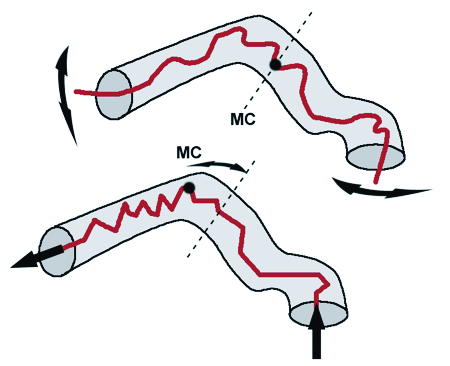Pierre-Gilles de Gennes predicted in 1971 that the viscosity of linear polymers varies according to the cube of the chain length l. In his model, the polymer creeps within a tube formed by the other chains. The coefficient of the associated curvilinear diffusion varies as the inverse of the chain length 1/l, which yields to the l3 behaviour of relaxation time and viscosity. However, experimental observations on linear polymers such as polystyrene have shown a l3,4 law, which is typical for a chain comprised from 100 to 10000 monomers, for nearly two decades.
Where does this difference between experimental and theoretical exponents come from? We have performed numerical simulations by kinetic Monte Carlo on simple polymers with various chain flexibilities. Conclusion: the De Gennes law presents corrections due to chain length fluctuations inside the confining tube. Both fluctuation modes described on the figure imply corrective terms behaving as 1/√l. We may observe that the corrected analytical law agrees with the experimental behaviour in l3,4. Those creeping problems are important for understanding how a polymer relocates inside a nanopore, a process used for the detection or selection of biopolymers, with the ultimate goal of DNA ultra-fast sequencing.

Two modes of length fluctuations taken into account in the simulation.
Top) the chain stretch and both ends exit the tube independently.
Bottom) the centre of mass position fluctuates leading to a correlated move of both ends, one in extension, the other in compression.